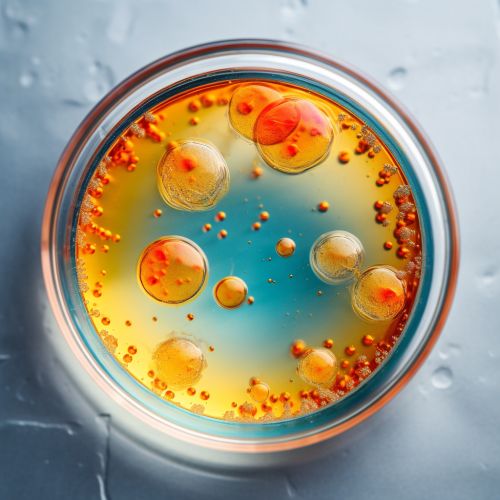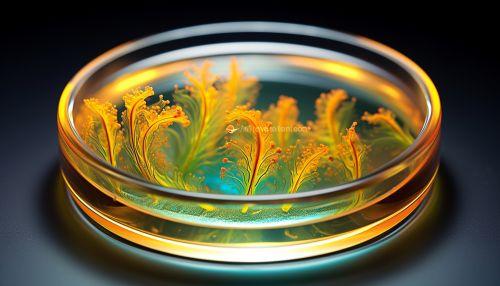Microbial Physiology
Introduction
Microbial physiology refers to the study of how the microbial cell functions biochemically. It includes the study of microbial growth, microbial metabolism and microbial cell structure. Microbes can be found in almost every habitat present in nature, including hostile environments such as the poles, deserts, geysers, rocks, and the deep sea. Some microbes, termed extremophiles, thrive in habitats which are detrimental to most life forms.
Microbial Growth
Microbial growth is the increase in number of cells, not cell size. The population growth of microbial cultures can be measured in several ways: by direct microscopic counts, by monitoring the decrease in a substrate (such as oxygen), or by the increase in a product (such as carbon dioxide). The most common method of measuring bacterial growth is often by visible observation of increase in turbidity (cloudiness) of the culture medium.


Microbial Metabolism
Microbial metabolism is the means by which a microbe obtains the energy and nutrients (e.g. carbon) it needs to live and reproduce. Microbes use many different types of metabolic strategies and species can often be differentiated from each other based on metabolic characteristics. The specific metabolic properties of a microbe are the major factors in determining that microbe's ecological niche, and often allow for that microbe to be useful in industrial processes or responsible for biogeochemical cycles.
Energy Metabolism
All microbial metabolisms can be arranged according to three principles: 1. How the organism obtains carbon for synthesising cell mass 2. How the organism obtains reducing equivalents used either in energy conservation or in biosynthetic reactions 3. How the organism obtains energy for living
Carbon Metabolism
Microorganisms are often described as being either heterotrophic or autotrophic, though some organisms use both types of metabolism simultaneously. Heterotrophic microbes live off of nutrients that are organically derived, and autotrophic organisms not only produce their own food, but also contribute substantially to the organic matter available to heterotrophs.
Microbial Cell Structure
Microbial cells, as defined by morphological characteristics, are typically unicellular organisms that are either prokaryotic or eukaryotic. Prokaryotic organisms, such as bacteria and archaea, are organisms that lack a nuclear membrane-enclosed nucleus. Eukaryotic organisms, such as fungi and algae, are organisms that contain a nucleus enclosed within a nuclear membrane or envelope.
Prokaryotic Cell Structure
Prokaryotic microbial cells have a cellular organization much simpler than that of eukaryotes. For example, prokaryotic cells lack a nucleus, mitochondria, chloroplasts and the other organelles present in eukaryotic cells. Most of the functions of organelles, such as mitochondria and chloroplasts, are taken over by the prokaryotic plasma membrane. Prokaryotic cells have three architectural regions: appendages called flagella and pili - proteins attached to the cell surface; a cell envelope consisting of a capsule, cell wall and plasma membrane; and a cytoplasmic region that contains the cell genome (DNA) and ribosomes and various sorts of inclusions.
Eukaryotic Cell Structure
Eukaryotic microbial cells are more complex and include a wide variety of membrane-bound organelles and structures. These cells tend to be larger than the cells of bacteria, and have developed specialized packaging and transport mechanisms that may be necessary to support their larger size. Eukaryotic microorganisms include fungi, algae, and protozoa.
